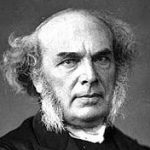Lesson Focus: You will be challenged to accept the truth that Jesus is the Savior.
Conflicting Opinions: Acts 2:22-24.
[22] "Men of Israel, hear these words: Jesus of Nazareth, a man attested to you by God with mighty works and wonders and signs that God did through him in your midst, as you yourselves know– [23] this Jesus, delivered up according to the definite plan and foreknowledge of God, you crucified and killed by the hands of lawless men. [24] God raised him up, loosing the pangs of death, because it was not possible for him to be held by it. [ESV]
There are six themes that can be identified in Peter’s sermons in Acts 2-4. (1) The age of fulfillment has dawned. (2) This has taken place through the ministry, death and resurrection of Jesus, of which a brief account is given, with proof from the Scriptures. (3) By virtue of the resurrection, Jesus has been exalted at the right hand of God, as Messianic head of the new Israel. (4) The Holy Spirit in the Church is the sign of Christ’s present power and glory. (5) The Messianic Age will reach its consummation in the return of Christ. (6) The Gospel preaching always closes with an appeal for repentance, the offer of forgiveness and of the Holy Spirit, and the promise of salvation to those who enter the elect community.
[22] Peter transitions from the first Old Testament quotation, which explains how the Spirit’s outpouring signifies the arrival of the last days, to the point of connection: Jesus of Nazareth. Peter tells the key part of Jesus’ story in verses 22-24. He calls on Israel to hear his words much as he did at the speech’s start in verse 14. Peter details what God did through Jesus. God accredited Him, showed Him to be victorious, gave Him authority, and calls those who hear the gospel to respond to Him. In sum, Christian preaching begins with the name of Jesus. It also reaches its goal in Him. Peter’s speech both starts and finishes with Jesus. Here was a man to whom God gave attestation with powers, wonders, and signs. Attested refers to something that can attest or show forth the quality of an entity in the sense of approved or demonstrated. The preposition by looks to God as the ultimate agent who attests or demonstrates who this Jesus really is. Peter describes Jesus’ miraculous ministry as evidencing God’s demonstration of who Jesus is. The threefold description of His miraculous activity emphasizes the divine means of attestation for Him. Mighty works appears ten times in Acts, mostly referring to the early church’s miraculous activity. Here the word looks back to Jesus’ miracles, which are also a display of God’s mighty work. These works are what God did through Jesus in the midst of the very Jewish audience Peter now addresses. The combination of wonders and signs appears sixteen times in the New Testament, including nine times in Acts. Peter sees these mighty works, wonders and signs as divine indicators of the fact that God worked in and through Jesus.
[23-24] Peter highlights a contrast between God’s work and the nation regarding Jesus. On the one hand, Jesus was delivered up according to God’s plan and foreknowledge. Jesus’ death was no surprise to God, nor was His suffering. All the texts that Luke has cited about Jesus’ suffering point to the idea that God planned that Jesus would suffer. Thus from the divine perspective, nothing that happened was outside God’s plan. God’s attested One was always going to suffer. On the other hand, Peter is very direct about where human responsibility for the death lies. The delivery of Jesus to the cross was according to the definite plan of God but it came through the hands of lawless men. Thus the primary cause of Jesus’ death on the cross was God’s plan, but the means by which God accomplished His plan was the actions of sinful men. The attestation continued through what God did with the crucified Jesus. God raised Him up. Death was not able to encircle Jesus and hold Him in its painful grip. God, the one with power over life and death, was able to overcome death’s grip and bring Jesus to life.
Stirring Testimony: Acts 2:32-36.
[32] This Jesus God raised up, and of that we all are witnesses. [33] Being therefore exalted at the right hand of God, and having received from the Father the promise of the Holy Spirit, he has poured out this that you yourselves are seeing and hearing. [34] For David did not ascend into the heavens, but he himself says, "’The Lord said to my Lord, Sit at my right hand, [35] until I make your enemies your footstool.’ [36] Let all the house of
[32-33] This Jesus, discussed in verses 22-24, is the One whom God raised from the dead. The phrase, this Jesus, placed at the start of the sentence, is emphatic. Peter preaches the very Jesus who has been crucified, the Jesus many think is dead and perhaps to be forgotten. The theme of witnesses to the resurrection reaches back to Luke 24:48 and Acts 1:8. Peter’s point is that the resurrection is neither an idea the apostolic witnesses created nor a myth nor a fabrication. Rather, the resurrection is something the apostolic witnesses experienced and know to be true, and so they can speak to its reality. All the Gospel accounts of resurrection show that it was not anticipated or immediately believed by the apostles. The earliest available source testimony to the resurrection is in 1 Cor. 15:3-5. In that passage, reflecting the early church tradition, the resurrection is treated in parallelism, as an event equal in stature and form to Jesus’ dying and being buried, with the proof being the appearances of various sorts. In other words, in this piece of early tradition, the resurrection is a historical fact like the death and burial, not an interpretation of an event. The resurrection is not a symbol or a metaphor for anything; it was a real event that changed the direction of the witnesses’ lives. That is precisely the point Peter makes here. Witnesses exist to underscore the resurrection’s reality. Its reality points to God’s work and vindication, the significance of which follows in verses 33-36. The witness is one who has seen Jesus in His resurrected state as shown in Acts 1:22. What happened as a result of the resurrection? Peter makes three points, the first two of which set up the third. (1) Jesus was exalted to the right hand of God. This language alludes to Psalm 110:1 and sets up the citation of the psalm in verses 34-35. (2) He received from the Father the promise of the Spirit. In light of what Luke already has written, this affirmation points to the realization of the messianic promise [Luke 3:16-17; 24:49; Acts 1:4-5]. Jesus serves as an active figure in salvation and a mediator of God’s blessing that leads to salvation and righteousness. The distribution of the Spirit is a messianic executive act. (3) As a result, Jesus has poured out what the audience sees and hears, that is, the gift of the Spirit. Jesus has now done what Joel promises. Thus the Spirit’s outpouring fulfills the promise pointing to the last days and to the Messiah’s mediation of salvation from God’s side. As important as the resurrection is to show that Jesus is alive and vindicated, it is even more significant as an indication of where Jesus went (to God’s right hand, to God’s presence) and what He does from there (giving the gift of the Spirit). Jesus’ resurrection-ascension has led to all of this activity involving the Spirit. Jesus functions as the "middle" figure in God’s blessing, as the Father directs to and through Him.
[34-36] Peter now turns to his third full Old Testament quotation, Psalm 110:1, an important proof text throughout the New Testament. In these verses in Acts, Peter makes the explicit point that the resurrection indicates Jesus’ position at the Father’s right hand, as the one who is seated at God’s side. This observation that Jesus has gone to God’s side is expressed figuratively since God does not have a limited location or a right hand. From this place of honor and unique glory, Jesus mediates the blessing of the Spirit and salvation in accord with the promise of God’s plan. The implication of this text is great, because for most in Judaism no person is able to sit permanently in God’s presence. God’s glory and person are too unique to allow this. This description of Jesus’ position suggests an intimate connection between Jesus and the Father and an equality between them. Here the title Lord has its full, heavenly authority because of Jesus’ position. Sharing God’s unique glory points to Jesus’ unique, divine position as Messiah, Lord, and Son. Peter draws the combined scriptural argument to a conclusion. He now believes that the case is made, and so he can bring assurance to them. The conclusion is that the one whom you crucified is the one whom God has made Lord and Christ. In this context, the verb made means that God has shown or established or brought about something by His action. The idea here is of a designation or role that God has made evident, much as Romans 1:3-4 argues. The order of the Christological titles is important because Lord is in the emphatic position. It is the key title, as verses 21 and 34 connect it to the reference to Lord in Psalm 110:1 and Joel 3:5. The term Lord in this context shows in particular Jesus’ lordship over salvation and the distribution of salvation’s benefits.
In sum, Peter’s speech proclaims that the distribution of the Spirit is the sign of the last days, the movement to the day of the Lord, the fulfillment of God’s promise, and, most important, the indication that Jesus is vindicated, so that this crucified one now sits at God’s side, mediating God’s salvific blessing as both Lord and Christ. The speech thus shows how God’s activity through Jesus stands at the core of the Christian message. Jesus’ resurrection means far more than merely that there is life after death. It is a vindication of Jesus’ life and mission, a demonstration that Jesus lives and still rules, and a reflection that Jesus is a unique person, sharing the precious presence and glory of God in a unique way. Christ’s death led to Christ’s victory and rule. The reality of the resurrection transformed the apostles from those who were timid to those who were bold to share Jesus with others. Peter also makes clear that the sin of rejecting God’s unique messenger stands at the base of why Jesus had to die and that forgiveness and the Spirit are what the gospel offers. The Spirit’s central place in the promise of God also is highlighted here. The Spirit is the evidence that Jesus is raised and reigns with God. The believer’s changed life is a testimony to Jesus’ current activity in the world and enables the mission. So God works through the Son and gives the Spirit. Undergirding the salvation message is the united work of Father, Son, and Spirit.
Standing at the Crossroads: Acts 2:37-41.
[37] Now when they heard this they were cut to the heart, and said to Peter and the rest of the apostles, "Brothers, what shall we do?" [38] And Peter said to them, "Repent and be baptized every one of you in the name of Jesus Christ for the forgiveness of your sins, and you will receive the gift of the Holy Spirit. [39] For the promise is for you and for your children and for all who are far off, everyone whom the Lord our God calls to himself." [40] And with many other words he bore witness and continued to exhort them, saying, "Save yourselves from this crooked generation." [41] So those who received his word were baptized, and there were added that day about three thousand souls. [ESV]
[37-39] The crowd was cut to the heart by Peter’s words. The verb cut refers to a sharp pain or a stab, often associated with emotion. Heart shows the sincerity and depth of the crowd’s response. They are convinced and want to know what to do. Whereas verse 36 is the theological conclusion of the speech, here is the application. It has three basic parts: (1) repent, (2) be baptized each one of you in the name of Jesus Christ for the forgiveness of sins, and (3) you shall received the gift of the Spirit. Thus, within his response, Peter presents forgiveness and the Spirit as the principal gifts of God that Jesus provides. Repentance indicates a turning in direction. In this context, it means to make a conscious turn toward God and God’s actions through Jesus. This verb (repent) is one of Luke’s favorite terms to describe how one should respond to the offer of forgiveness. Peter is telling his audience to change direction from the attitudes that led them to crucify Jesus, and look to God through Jesus for forgiveness. Repentance and faith are two sides of the same coin. Repentance stresses the starting point of the need for forgiveness whereas faith is the resulting trust and understanding that this forgiveness comes from God, the one turned to for the gift [Acts 20:21]. The call is for each one to be baptized in the name of Jesus Christ for the forgiveness of sins. The act of baptism portrays a washing and signifies what repentance produces: cleansing. It points to a response to God in repentance which has already taken place in the heart of the believer. It is not the act of baptism but the attitude behind it that has the efficacy of yielding forgiveness. In the present context, the baptismal washing that comes with repentance signifies an inner cleansing that allows the person to be indwelt by the Spirit. The person who turns toward God calls on the name of the Lord by being baptized in the name of Jesus Christ. This phrase reflects the language of the speech in Acts 2:21, everyone who calls upon the name of the Lord shall be saved. So Peter’s remarks draw upon what he has already proclaimed in Acts 2. The rite is not magical but represents and pictures what repentance is asking God to do, to give forgiveness. To agree to baptism is to affirm in a public act what the heart has already done to come into relationship with God. Peter calls for each one to be baptized in order to express a personal, visible turning to God. That baptism takes place in the name of Jesus Christ shows the authority Jesus has at God’s side in heaven. Now one appeals to God through this formerly crucified one. This interchange between God the Father and the Christ as the one called upon shows the unity of the work between God and the Exalted One. The second key element in the gospel is the gift, that is the Spirit, already bestowed on those who have followed Jesus but now available as the sign of the new era to anyone who turns to embrace the call of God made through Jesus. The Spirit falls on those who call on the name of the Lord for deliverance. At the core of the gospel is the offer of the gift of the Spirit and what the Spirit provides to the one who believes. All four references to a gift in Acts are to the giving of the Holy Spirit to those who respond to the preaching of the church [2:38; 8:20; 10:45; 11:17]. In the Spirit is the enablement for new life and for sharing the new message, as Acts 2 itself has shown.
[40-41] Luke has shared the key portions of the speech and now reports that Peter said far more than is recorded, as he both testified to them and was exhorting them. The warning about the fate of this crooked generation alludes back to the mention of the day of the Lord and the judgment that comes at the end [19-21]. The forgiveness that Peter’s hearers would obtain by turning to Jesus will also deliver them from this judgment. The word crooked alludes to a generation that is ethically crooked, spiritually off the path to God, and thus subject to judgment. Peter urges his audience to experience salvation and deliverance from the coming judgment. The response to Peter is significant. About three thousand are baptized and added to the saved. Here Luke calls the response those who received his word. This is yet another way to summarize the response to the gospel in this chapter. Receive goes along with call on the name of the Lord [21] and repent [38]. Each expression points to a different dimension of the embrace of the gospel that saves. Luke will add other descriptions as Acts proceeds.
In sum, this concluding unit on Pentecost speaks to Peter’s concise reply concerning how to respond to the gospel: repent and show this response by participating in a rite that symbolizes forgiveness and cleansing into life through Christ Jesus. This was the promise of God to all who are called, to all who respond. In addition, salvation means no judgment. Peter’s effectiveness in his speech leads to the growth of the believing circle. Peter’s focus is not only on what God provides in salvation but also on the identity of Jesus. The resurrection means that an exalted Jesus distributes the Spirit to those who turn to God. This focus on Jesus and what the resurrection means for Him is part of what makes Peter’s evangelistic effort so effective. People not only know what God is giving (the Spirit in new life on the basis of provided forgiveness) but also have the privilege of knowing and appreciating the work and greatness of the one through whom the gifts of life, forgiveness, and the Spirit come. So, for Luke, this access and offer are the announcement of the gospel. Salvation comes to the one who believes, repents, calls on the Lord’s name, and receives the gospel. All four of these responses mean fundamentally the same thing: one has embraced God’s grace through Jesus and the Spirit. In Acts, the speech not only describes a gospel presentation that is full of important Christology, pneumatology, and soteriology; it also portrays the fact that an appropriate response to this gospel can be described in various parallel ways. This message of hope from God is what the church witnesses to as it calls all people to believe. All of this assumes one thing: all humanity has a need before God that God Himself must take care of in order to make things right.
Questions for Discussion:
1. What are the six themes that can be identified in Peter’s sermons? Is this a model for our evangelism?
2. Why is Jesus’ resurrection at the heart of the Christian faith (see 1 Cor. 15:12-14)? What happened as a result of the resurrection?
3. Note the three basic parts of Peter’s answer to the question: What shall we do? Explain the importance of each of these elements for the new believer. What does baptism symbolize and why is it important? How does it connect with the gifts of forgiveness and the Spirit?
References:
Acts, Darrell Bock, Baker.
The Message of Acts, John Stott, Intervarsity.
The Acts of the Apostles, Richard Longenecker, EBC, Zondervan.

















